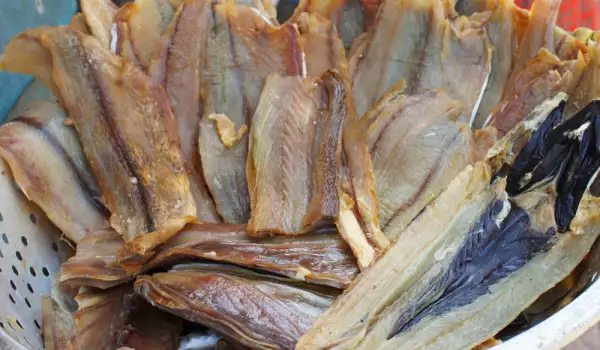Remember that fresh fish tends to rapidly deteriorate. Because of this, you need to find a way to preserve it. One great option is drying - a method of preserving food that works by removing water from it.
Water is usually removed by evaporation (air drying, drying in the sun, smoking, or wind drying) but in the case of lyophilization (freezing), water is removed by sublimation. Bacteria, yeasts and molds need water to grow, and drying effectively stops the chance of their survival in it.
The oldest traditional way of preserving fish is drying. Preserving food this way is the oldest known storage method in the world. Dried fish has a storage life of several years. The method is cheap and effective in suitable climates. It can be done directly by the fishermen and their families, and the resulting product is easily transported to the market. At home, this process is also not difficult.
Drying of fish
Step 1. Cut the fish into thick strips lengthwise. Fish fillets are cut into smaller, approximately equal-sized strips.
Step 2. Cover the fish strips with marinade made of 1 1/2 to 2 tsp salt per kilogram of fish, spices of your choice and 1/4 cup water. Salt is important, because it does not allow bacteria to grow in the fish during the drying process. You can use one, or a combination of: black pepper, cayenne pepper, tarragon, basil, parsley, cumin, curry or other herbs and spices. Leave it for about 8 hours in the fridge to allow the flavors to absorb.
Step 3. Take each strip of fish in hand and drain the marinade. Place it on a tray. Perform this step for each piece of fish, without overlapping strips.
Step 4. Dried fish strips are left outside or in a room with an appropriately high temperature, about 25-35 degrees, until it becomes hard, dry and supple. This will take about 10 hours, but many factors must be considered, including humidity, the thickness and quantity of fish, which can speed up or slow down the drying process. If you see moisture on the fish, you must continue to dry it, but if the fish falls apart when you bend it, you've dried it too long.
Once it is ready, it can be stored in a freezer, in jars or packets.
Also check out our recipes for:
- pickled fish;
- salted fish;
- or learn how to smoke fish;






















